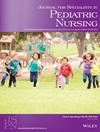Development and Evaluation of a Virtual Reality Intervention for Reducing Exposure to Endocrine Disruptors in Female Adolescents: A Pilot Study
Abstract
Purpose
This study aimed to develop a virtual reality (VR) intervention for reducing exposure to endocrine disruptors (EDs) and examined the effect of the intervention among Korean adolescent girls.
Design and Methods
A methodological design was employed involving five phases for developing the VR tool and its evaluation of validity testing. The five development phases were conducted through (1) a literature review and surveys to select appropriate VR content for adolescents’ snack shopping, (2) a VR scenario composition based on the information-motivation-behavioral (IMB) skills model, (3) implementation of the VR tool using Oculus Quest 2, (4) heuristic and usability evaluations of the VR tool, and (5) the confirmation of final maintenance. For the evaluation, a one-group pre- and post-test design was utilized with a convenience sample of 19 adolescent girls who were recruited from a high school located in W city. Knowledge about EDs and sensitivity to women's reproductive health problems were measured using a self-administered questionnaire.
Results
The prototype of a 15-min VR intervention was developed based on the waterfall model and evaluation criteria yielded acceptable results through content validity, heuristic evaluation, and usability test. The Wilcoxon signed-rank test showed significant differences in knowledge about EDs (U = 3.57, p < 0.001) and sensitivity to women's reproductive health problems (U = 4.36, p < 0.001) between pre- and post-intervention.
Practice Implications
The VR intervention was found to be applicable and effective for reducing exposure to EDs in female adolescents. School and community health centers need to expand the application of VR-based health education to provide adolescents with a conducive environment for engaging in health behaviors and enhancing learning experiences.

 求助内容:
求助内容: 应助结果提醒方式:
应助结果提醒方式:


